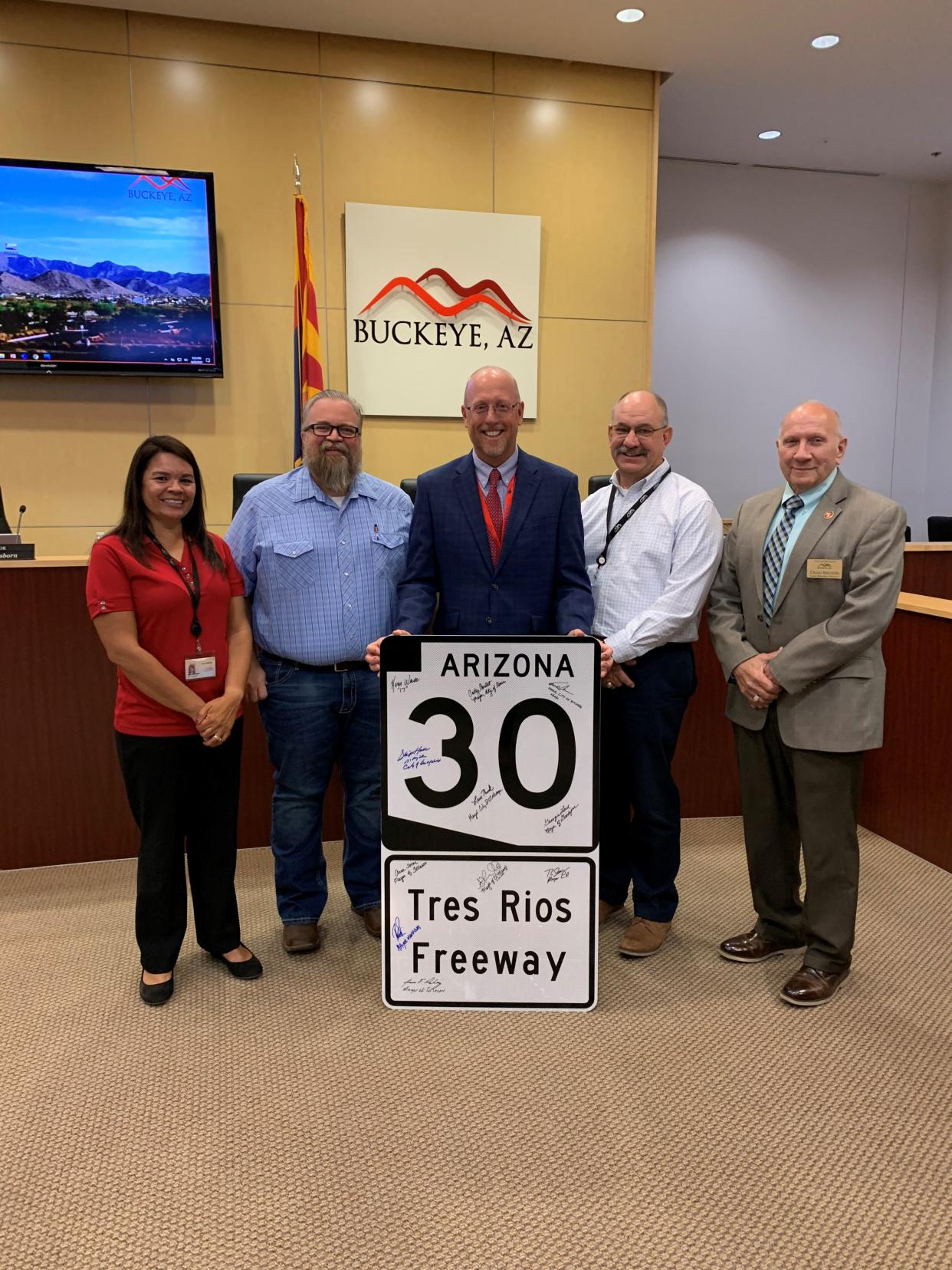Fast-growing Buckeye's land, water rights deal still not enough to quench need

The Buckeye City Council approved the spending of $80 million on a lot with groundwater rights for fiscal year 2023 during a special meeting on Monday.
Buckeye, one of the nation's fastest growing cities, has approved 27 master planned communities and two planning areas that would grow the city's population by 872,000 people.
Information needed:A new model could reveal major water trouble for Buckeye. Release it now
The city recently made headlines after Gov. Katie Hobbs released a report by the Arizona Department of Water Resources discussing the far West Valley's groundwater issues.
The report, called the Lower Hassayampa Sub-basin Groundwater Model, shows that several development areas in Buckeye need to find alternative sources of water aside from the Lower Hassayampa Sub-basin.
After meeting in an executive session for over two hours, the City Council voted to approve the purchase. Essentially, the council's decision authorizes the city manager to deliver the purchase agreement on behalf of Buckeye and move forward with buying the land.
Buckeye will purchase the land from Harquahala Valley Landowners, LLC.
It's one of the few basins where it is legal to transport groundwater to an active management area, said Kathleen Ferris, senior research fellow for Arizona State University's Kyl Center for Water Policy. The city also had to purchase the land itself in order to be able to pump groundwater.
Buckeye Mayor Eric Orsborn said the purchase was in the works for several years, so the money was already set aside in this year's budget. The city also was looking at several other opportunities to expand its water portfolio for the future as the city continues to grow, he said.
Environment: Arizona says developers lack groundwater for big growth dreams in the desert west of Phoenix
In the purchase agreement, Buckeye will gain 592,592 acre-feet of groundwater and is authorized to withdraw a maximum of 5,926 acre-feet per year over a minimum period of 100 years.
Orsborn said the water will be used for municipal purposes, which could include residential or commercial and retail.
In a statement to The Arizona Republic, a Buckeye representative said it will take up to six months to close the purchase and several years to determine the most cost-effective way to transport the water to the city. However, having access to the water rights strengthens the portfolio regardless of development.
In the city's 2020 Water Resources Master Plan, options discussed to transport the water include the construction of the city's own pipeline or transportation of the water through the CAP canal.
While the city is expanding its water portfolio, it's still not enough to sustain the city's expected growth, Ferris said. A 1 acre-foot of water typically serves three single-family homes for a year. So, if the water is used to support single-family homes, it could eventually service more than 17,000 homes per year.
This article originally appeared on Arizona Republic: Buckeye to spend $80M on groundwater rights

